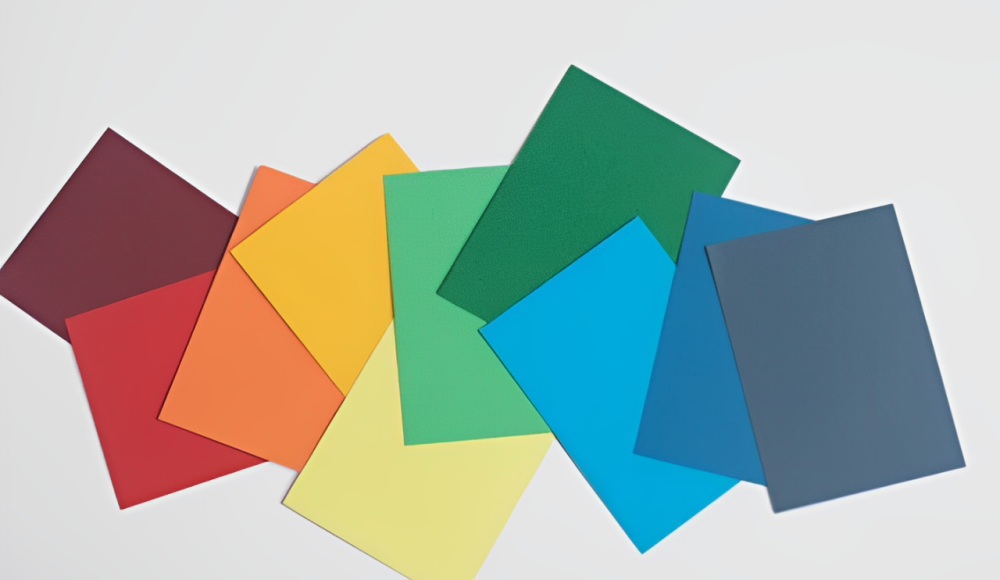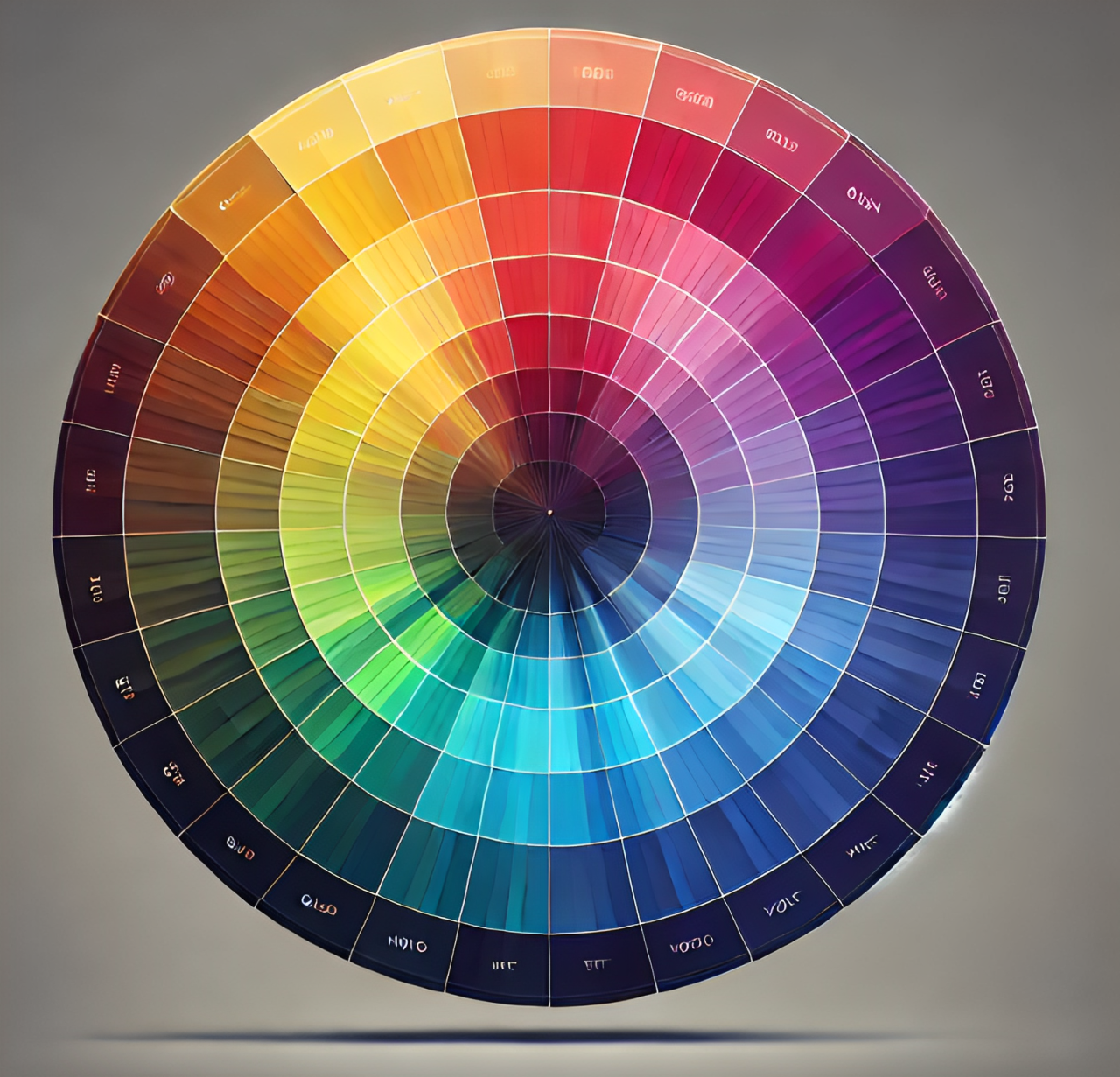Visual color provides one of the most important functions of perceiving the world by determining people’s moods, choosing a product, or admiring art. Color theory can be essential in an organization, ensuring that designs are balanced, messages conveyed, and appeals to a product. This part deals with the fundamental aspects of color, starting with definitions and proceeding to color space and the effect of the choice of color pair. Whether you’re creating an entire brand or simply selecting the next shade of paint for your room, having a good amount of knowledge in color theory will only improve your talents.
Color Theory and Terminology
What is Color?
Color is the bundle of sensations arising out of how the techniques of light waves of different wavelengths pass through the eyes and into the brain. In design and art, emphasis is put into two categories primary and secondary colors and tertiary types which are a basis for making combinations that are pleasing to the eye.
What is Color Space?
A color space is simply an organized method of defining color that is stable across devices. Different color spaces exist: RGB is a color space for computers and the web, while CMYK is used in printing. By defining some of the color spaces within these areas, it is possible to achieve color consistency for designers and printers.
What is Tint?
A tint is a color that has been weakened by the addition of white. Hues are lighter and less intense versions of color and are ideal for any designs that would need a little less heaviness. For instance, if you attempt to add white to blue then you get light blue, or in other terms, light blue is a tint of the original blue.
What is a Shade?
A shade is a color in which the black color has been mixed in such a way that the darkness is visible. Shades are created by darkening the chosen color and thus the closest to creating a layering effect that can only serve to enhance a design. For example, combining two hues of black original red in a mix will create a darker red shade that is close to the original red.
What is Value?
Hue refers to the place of color on the lighter and darker spectrum. It is a significant feature of color and its main role is to determine the contrast and visibility range of the designed product. A higher value means lighter color and a lower value means that the color of the clothes is darker. Proximity allows to increase value and gain highlights and shadows, which is able to help in focusing or creating depth in compositions.
What is Saturation?
Saturation determines the amount of that particular color when it is dominant in tint. Luminosities scale simple colors to full ranges or a desaturated range from full white and black to gray. Saturation is usually administered to give designs a specific mode of operation whereby a high saturation provides energy while most minimal saturation creates an unexciting feel.
What is a Tone?
A tone is one color that is got by making another one towards grey which leads to the creation of a new and generally, tender color. Reducing the saturation of color makes it look less obtrusive, that is, less vibrantly included in the design to make it look more useful for establishing subtle and refined tones in the color layout.
What is a Hue?
Hue is known as the color unmixed with the other two tools, black, white, or any gray shades. It stands for the primary frequency of light which describes what we differentiate as red, blue, green, and so on. Hues are the main components of all colors and they can be changed by adding tints, shades, and tones of different degrees to get fluent sequences of similar or contrasting harmonies.
What are Color Harmonies?
Joint values are combined hues depending on their position within the wheel of colors. Smooth and Pleasant/harmonizing shades of color are those colors that are suitable for one another and have an eye-pleasing appearance. These combinations are versatile and are commonly applied in design and branding to create a certain mood or look. Schemes are complementary, split complementary, triadic, square and rectangle, and analogous; each of them yields varying degrees of contrast and unity.
Complementary Colors
In the color circle, they are called ‘complementary colors of each other’ examples include red/green and blue/orange. When they work side by side, the two colors attract attention and make a stronger impression that would not be achieved with a continuous repetition of any one of them. This type of blend is particularly useful where attention grabber or energy-boosting color is required but should not be overdone in order not to dominate the canvas.
Split Complementary
Split complementary color harmony employs one base hue and two hues traditionally found on either side of the shade’s complement. For instance, if blue is the foundation, then a split complementary color is yellow-orange and red-orange will be chosen. Whereas complementary colors are very distinct and harsh in contrast, this scheme looks as though it has a fairly good degree of vibrancy to it. It is particularly valuable for designs that can benefit from injection of vibrancy but are not to be allowed to become chaotic.
Exploring Advanced Color Harmonies
1. Triadic
The separation of three colors in the color wheel that is used so that they form a triangle is known as the triadic color scheme. These include red, yellow, and blue. This harmony creates a lively and balanced key because it contains; or is derived from, the primary color. Its major advantage is the high contrast; however, triadic tones are quite equal and thus Create perfect harmony for dynamic and bright-looking themes.
2. Square
The square color scheme includes four colors distributed in the color circle with equal intervals that form a square. What can be noticed is a lot of contrasts and plenty of variety in the combinations yet it is all in a balanced manner. It usually contains two symmetrical color combinations. Square harmonies work well as they are rather universal and in terms of ratios, they can create rather bright and saturated designs; at the same time, proper shade selection requires much more attention concerning harmony.
3. Rectangle
A rectangle color scheme is similar to the square color scheme but four colours are two sets of complementary colors. It offers good symmetry and measures of the design with many choices possible at the same time. It gives flexibility in the placement of elements but is well suited to projects which need to look balanced in terms of color since the elements use complementary colors, best for full, complex designs.
4. Analogous
Complementary colors are colors that are diametrically opposite each other on the color wheel like blue, blue-green, and green. Many of these colors run well together, thus producing positive and balanced aesthetics. They are best used for designs that require a low-activity theme that is coherent. Analogous color schemes are usually comprised of one hue which is accompanied by some secondary hues.
Why Brown is Not a Color?
Due to this combination, brown is usually the subject of discussions regarding whether it is introduced as a true color or not. Consequently, even though a brown cannot be a pure color because it does not offer the purity of hue or even a come-hither vibrancy or clarity as the purists who endlessly parse color charts to identify and categorize might think, or even a true ‘shadow,’ it has a use in design—in its own manner—it symbolizes warmth, stability, and soil.
Color as a Manufacturing Tool
Color plays a key role in CNC services, injection molding, die casting, and sheet metal fabrication:
- CNC Services: Color is used in the distinction of material, besides in branding and in surface treatments as anodizing.
- Injection Molding: The key functions consist of maintaining color continuity and coordinating the color of textured paper, as well as increasing the visibility of the product and providing additional functional characteristics such as protection against UV radiation.
- Die Casting: Coatings enhance productivity by providing longer product life and service plus enhancing brand identity.
- Sheet Metal Fabrication: They add value owing to their ability to protect the products and, at the same time, serve as a means of product differentiation.
Conclusion
Color is an active and quite effective element in design, branding, and communication. Sadly, in our day-to-day applications we tend to forget the basis of color theory and color behavior but having this knowledge will help in designing more efficient and attractive products, interiors, and graphics. If you want to stir up an emotion, emphasize, or achieve unity knowing more about color can likely help improve the work. Applying color as efficiently as it can possibly be applied will ultimately boost the customer experience, brand awareness, as well as interaction.
FAQs
How the tint and shade are different from each other?
There is the tint which is achieved by mixing white within a color so as to produce a lighter shade and a shade which is achieved by including black within the color to produce a darker shade.
Which color does bring the most trust?
Blue is generally believed to symbolize trust and reliability which are essential for corporate Identity.
Why is color theory significant in design?
Whichever color is used can be governed by color theory to make sure it gets to balance and appeal to the meaningful aesthetics and moods that are being passed.
Can color affect mood?
Indeed emotions can be affected by colors; for example, when one sees red color, there is likely to be a feeling of excitement as compared to the feeling when one sees blue colors.
What are analogous colors?
Complementary colors are those that are adjacent to each other on the spectrum chart, giving unity to the designs.
Why is color used as a factor in marketing?
It acts as an informative tool for the buyer and therefore plays an important role where the rebranding process is being undertaken.
What are good website colors and why?
These three colors are often used especially when designing websites because they look good and elegant and the text is easily visible if you choose dark blue, green, or brown.











